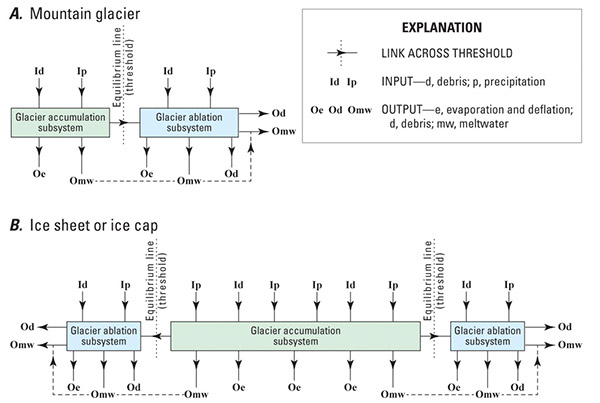Select image for high resolution and Save to download

Figure 74. Schematic diagrams of input (accumulation) and output of mass (ablation), A, mountain glaciers and, B, for ice caps and ice sheets. The accumulation and ablation areas of mountain glaciers, A, tend to be approximately similar, except for metastable tidewater glaciers. In a steady-state or in an increase-in-mass state, ice caps (miniature ice sheets) and ice sheets have much larger accumulation areas than ablation areas, which are toroidal in shape because of their parabolic bilateral symmetry in cross section (see fig. 4B). Under conditions of climate warming, an increase in elevation (altitude) of the equilibrium line (ELA) reverses this relationship of accumulation and ablation areas (for example, the toroidal ablation area is larger and the circular accumulation area is smaller). If the ELA rises above the surface of the ice cap or ice sheet, the accumulation area no longer exists, and the ice cap or ice sheet will rapidly disappear (melt away). Modified from Sugden and John (1976, p. 6, fig. 1.5). See also figure 13, which shows the sensitivity of both types of glacier systems to change in elevation (altitude) of the equilibrium line. |